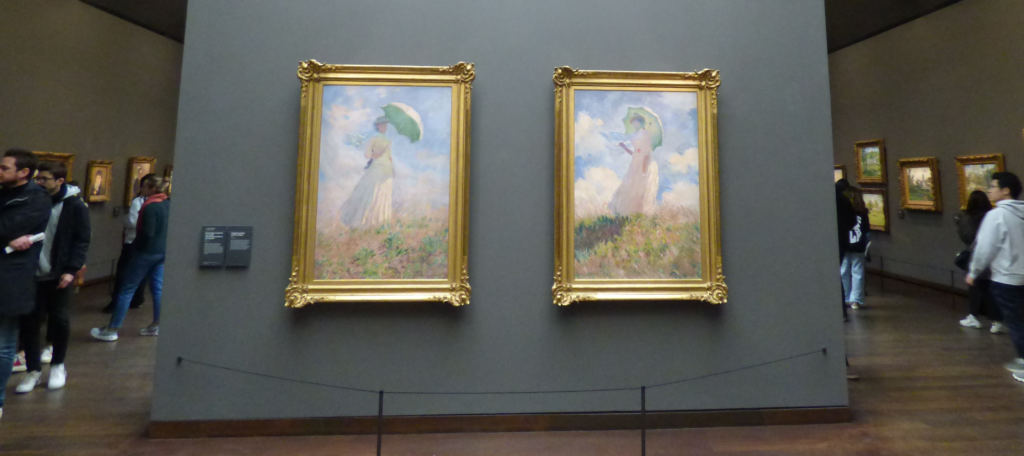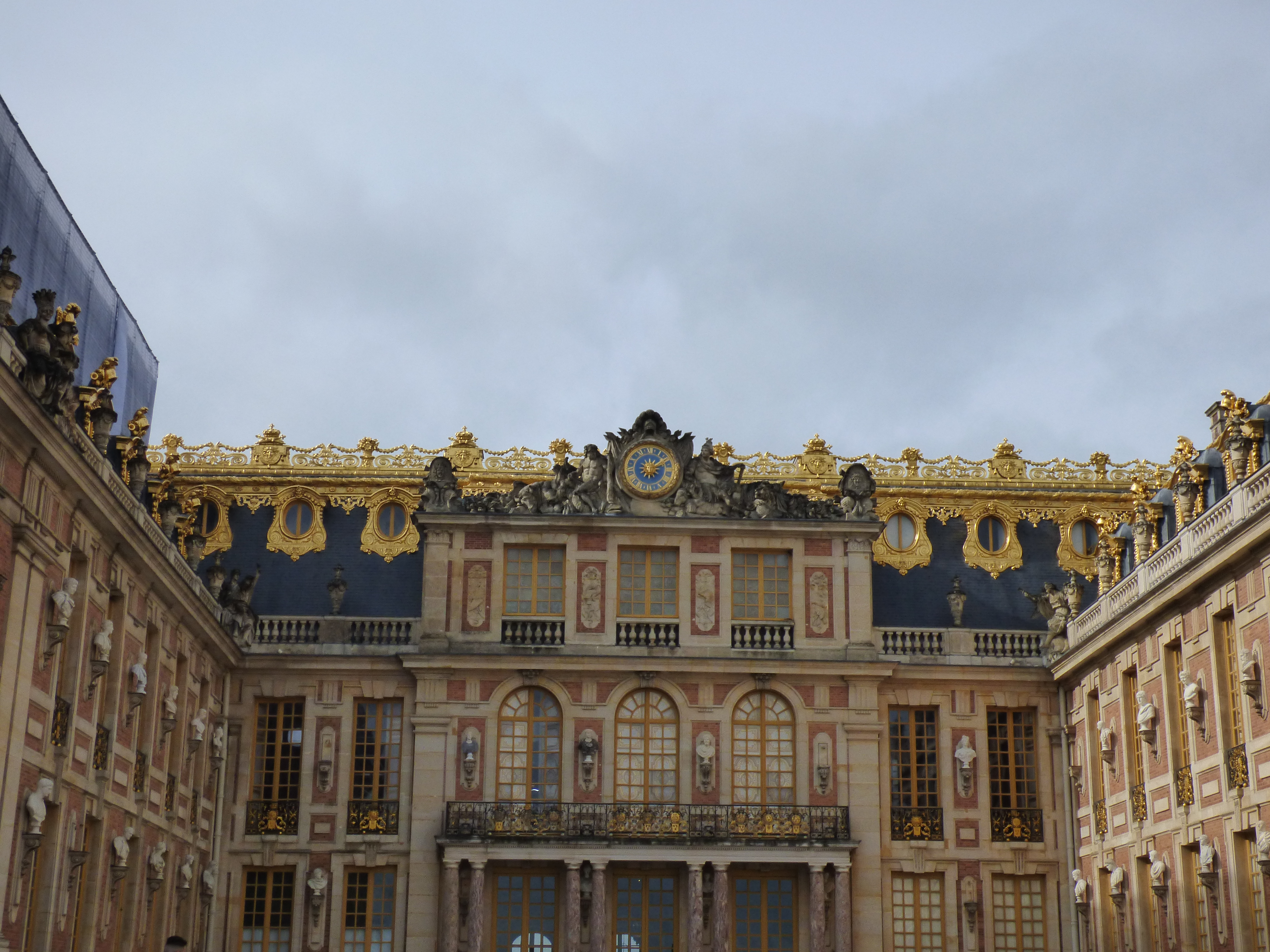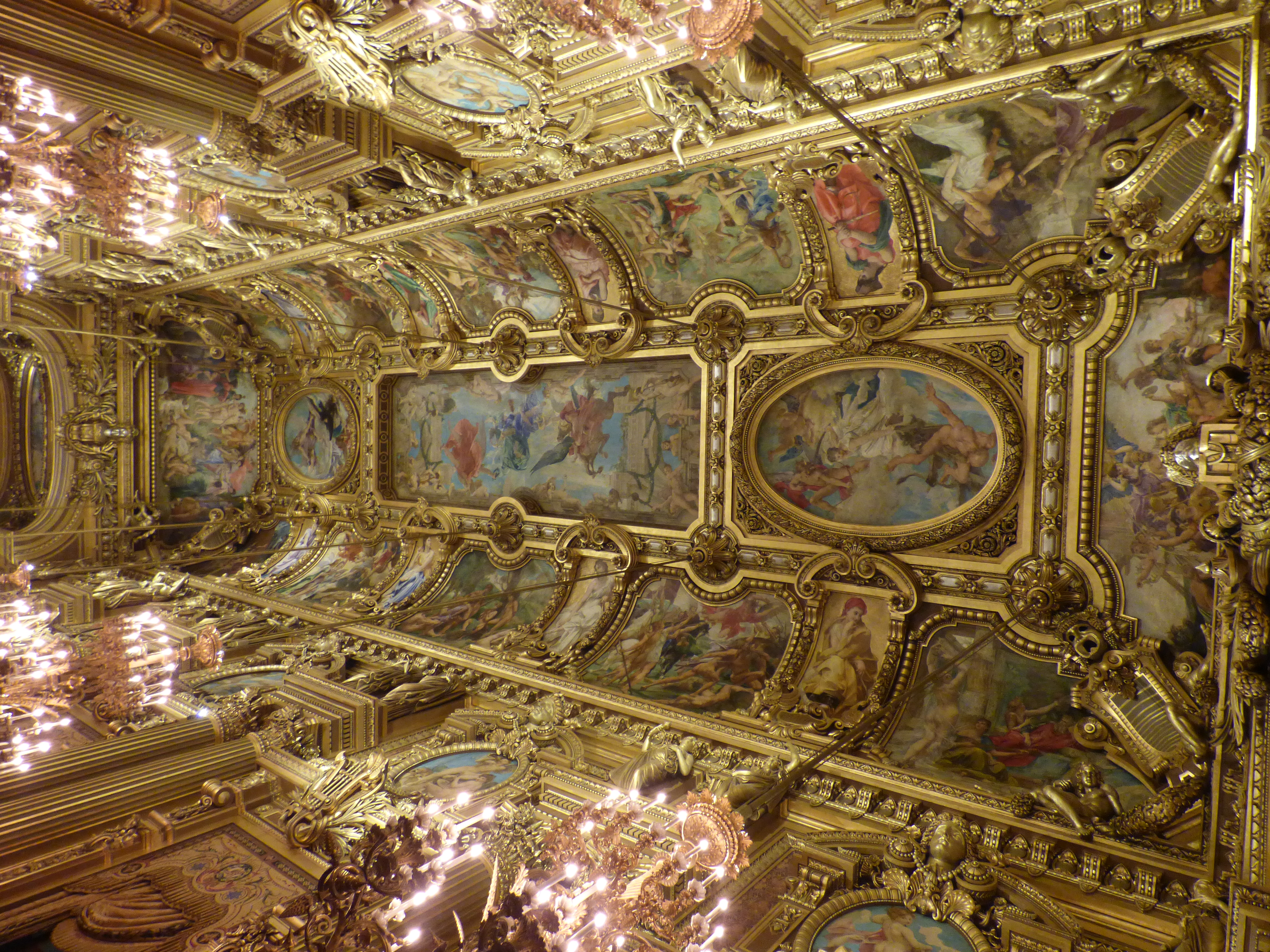Another set of holidays has passed in my part of France. It was my last fortnight off. Then six weeks of teaching, and my contract will end shortly into the next lot of holidays. They say time flies — but have we considered the possibility that it teleports? The evidence is mounting.
It was a special trip, getting company all the way from Oz! Together, S and I hit the highlights – the Eiffel Tower, the Arc de Triomphe, Notre-Dame… We did the Musée d’Orsay because that’s my favourite and it was changed from what it was even just six weeks earlier, the Van Goghs’ moved to a different but more logical section.
“The Ladies”, as I call them, have been moved to a prime place, which I love. Monet’s Haystacks I cannot find. I don’t know if I just wasn’t looking in the right space or if they’re away on loan.

We did some things that I’ve never done before as well. Namely, Château de Versailles, or the Palace of Versailles to English speakers, and also the Palais Garnier, which is Paris’s most iconic opera house. Which brings me back to the title. Wow. How the other half live. Or lived, I suppose. That didn’t turn out so well for a lot of them. Versailles being the palace where Louis XIV and Marie Antoinette lived until they fled to Paris and were eventually killed via guillotine. Now there are fountains built over the execution sites in the square known as Place de la Concorde (though it has be re-named over and over again throughout Paris’ history). We also visited them during this trip, another first for me.

The Château de Versailles


Both of these stops are big architecture stops. The Château de Versailles starts with a big, uneven cobblestone courtyard. Plenty of people stand outside taking pictures with the gate, but it is the end of winter, and a true crowd hasn’t built yet. You have the option to visit and look outside the Palace and visit the gardens for free. But we went inside to the museum. You follow the designated flow through rooms that take you through the history of the palace: its start as a hunting lodge, and how buildings were added and changed. Various corresponding art fills the room along side educational videos, and example models. Later you move through the King’s Quarters, and then the Queen’s. There is a some furniture in the rooms made up again as bedrooms – but there was very little furniture left in Versailles. During the Revolution, while there was some looting, much of the furniture was destroyed. The monarchy living like this while the people starved – all of the most significant furniture was destroyed in protest and retribution. But some recovered pieces help give you the idea of some of the rooms.


My favourite part of Versailles is perhaps a little cliché and predictable: The Hall of Mirrors. Exactly what it sounds like. They could use some Windex- and perhaps they do get cleaned before the summer tourist boom, but for us they were a little murky. Still, I loved it. Even just the concept- the huge windows on one side of the hall looking out over the grounds, and then hundreds of mirrors like wallpaper on the other side. The world reflected back. On a sunny day, the light must get magnified until it’s too beautiful to bear.

Then outside there are the gardens, and the gardens, and the gardens. It’s broken up into several named groves, all surrounding the central ponds and fountain, and some carefully shaped lawns in swirling patterns. After all that, there is a second set of ponds which are double the length of the first section of the garden, long rectangles stretching out towards the horizon. We sit and eat a little picnic on a garden bench – famous Laduree macarons, cheap supermarket fruit pouches and madeleines. I eat a ‘Marie Antoinette tea’ macaron in a brilliant shade of blue and wonder what the revolutionaries would think of it all. Perhaps they would think it should be named after one of them. The main revolutionary I can think of is Robespierre – but then they killed him in the end too, by the guillotine no less. I’m glad that, even though much of the furniture and the like got destroyed, the building remains intact. Because it is opulence, yes, but it is also skill, a representation of the collective effort, people working together to make something beautiful.
Palais Garnier

We see this also in the Palais Garnier. Carefully carved stone work, careful designs inlaid from floor to ceiling. Everything about it is artistry. The history here is also laid in wealth, but it’s not so bloody. The rich would rent theatres boxes by the year, and it was a regular social outing and an important place to be seen. Now it spends its days as a tourist attraction, though there are still shows to see in the evenings. The richness that has been inside these walls over the years – and there I am, one tourist of many in jeans and a raincoat. Like seemingly everything in Paris, it has a museum aspect to it. There are videos of previous events held there, recreating the past, and we see the extravagant fashions of the former patrons. A few tourists keep up the old trends, taking photos on the stairs dressed in long evening gowns.


The architecture is a delight to see, in our current era where things are built with cost efficiency and time efficiency in mind – never with beauty. It’s wonderful to see what humans can create, all the different kinds of crafts and skills.

I have been trying to figure out the end of this post for weeks. I want to be honest about this.
Paris is highly idealised. To the point where there is actually a medical condition called “Paris Syndrome.” Tourists visit with such impossibly high ideals, and the disappointment can actually make them physically ill!
Paris is not a dream. It is a real city with a rich and often dark history. Paris is duality, always at odds with itself, constantly in contrast. It is a city of light and romance and art. It also smells and has graffiti and way too much traffic noise. It’s the tourist capital of the world, and potentially the pickpocket capital of the world (Barcelona keeps the competition neck and neck). It’s a city where beautiful, intricate fountains cover sites where more than a thousand people faced the guillotine.
That palace that is so intricate and beautiful for many represented a terrible misplacement of wealth as much of the country starved. The King and Queen would flee but they would be killed anyway as the people sought to abolish the monarchy in a regime that ended up killing half their own leaders as well. Twenty-one years later, there’d be another King of France.
I love Paris. It’s not the perfect city. Such a place doesn’t exist. But Paris is alive. Paris is practically anthropomorphic. Doesn’t it sound human? A mix of light and dark. Well-meaning, prone to repeat history; the best of intentions even if the plan doesn’t quite work out as hoped. Filled with all sorts of little surprises to be discovered…

[I don’t know that I will ever be truly satisfied with this post and I am already a week late. So I am setting it to sea and letting it be what it is. Next up will be Basel, Switzerland!]

I actually love your thoughtful and thought provoking ending to this blog Jenn.
Looking forward to reading your blog from Basel. Will you get down to Neuchatel?
Thanks for this comment – it made me re-read the end and actually I am pleased with it too. Maybe I just needed a little distance from the work? Sadly we did not make it to Neuchatel – there is not enough time in my holidays to see all that I would like to see!